 July 23, 2015 John E. Ross, KD8IDJ, Editor
| ||||||||
ARRL Board Approves HF Band Plan, National Parks Centennial Event, Award Winners Meeting July 17-18 in Windsor, Connecticut, the ARRL Board of Directors adopted amendments to the ARRL HF Band Plan -- with some tweaks; approved a National Parks On The Air (NPOTA) operating event in 2016 to celebrate the National Park Service centennial; authorized the filing of a rule making petition with the FCC seeking changes on 80 and 75 meters; initiated the search for a successor to ARRL CEO David Sumner, K1ZZ, who will retire next May, and named several ARRL award recipients.
The Board adopted amendments to the ARRL HF Band Plan that were recommended by the HF Band Planning Committee, with one major change from the proposals as outlined in the April 2015 issue of QST and summarized on the ARRL website. That change was to set the upper RTTY/data limit for 20 meters at 14.125 MHz, consistent with the IARU Region 1 band plan. Rule Making Petition to FCC The Board authorized the preparation of a rule making petition to the FCC, seeking changes in the 80 and 75 meter bands that are consistent with majority opinion among more than 1000 responses to an online membership survey. The petition would seek to shift the boundary between the 80 meter RTTY/data subband and the 75 meter phone/image subband from 3600 to 3650 kHz. It also would restore privileges in the 3600-3650 kHz segment to Advanced, General, Technician, and Novice licensees. In addition, the League will ask the FCC to shift the automatically controlled digital station (ACDS) band segment from 3585-3600 kHz to 3600-3615 kHz, consistent with the IARU Region 1 and Region 2 band plans, and authorize Technician and Novice licensees to use RTTY/data emissions in their 15 and 80 meter band segments, the latter change contingent on expansion of the 80 meter band.
Additional details are forthcoming, but the Board set into motion its search for a successor to ARRL CEO David Sumner, K1ZZ, who has set a target retirement date of May 1, 2016. By then, Sumner will be 67 and will have been on the Headquarters full-time staff for 44 years. He was named Secretary and General Manager in 1982, with a change in title to Executive Vice President in 1985, and the additional title of Chief Executive Officer in 2001 (the title of Executive Vice President was phased out in 2011). ARRL Award Recipients The Board named several recipients of ARRL awards:
Dues to Rise in 2016
The Board approved a $10 increase in the League's annual dues rate, effective January 1, 2016. In so doing, the Board adopted a recommendation of the Administration & Finance Committee. ARRL basic dues have been held at $39 a year since 2001. ARRL CEO David Sumner, K1ZZ, said the League has done as much as it can to hold off a dues increase for more than a decade, but now it's a necessity, not an option. "One of the most difficult decisions a membership organization faces is a dues increase," he said. "Over the past 14 years we have managed to hold the increase in expenses to just 19 percent, against a US inflation rate of 32 percent over the same period," he continued. "We have implemented operating efficiencies that allowed reducing the staff by 15 percent while expanding the range of services to members and to Amateur Radio as a whole. We created a development program, offering to those members who have greater financial capacity an opportunity to support their national association at a higher level." Enhanced membership services since 2001 include inauguration of Logbook of The World® (LoTW); a digital edition of QST at no additional cost; expanded QST and video product reviews; upgraded public service support including the Ham Aid program, Emergency Communications Training, and the ARES® E-Letter; the Education & Technology program and Teachers Institutes on Wireless Technology, and the Amateur Radio on the International Space Station (ARISS) program. Sumner aid that advocacy on behalf of Amateur Radio has included relentless defense of Amateur Radio spectrum, the Amateur Radio Parity Act, and an increased awareness of the value of Amateur Radio on Capitol Hill. Details of ARRL's revenues and expenditures are available in its Annual Report archive for the years 2002 to 2014. The cost of a basic ARRL membership will rise to $49 on January 1, 2016. An ARRL Life Membership, now $975, will increase to $1225.
Amateur Radio Enforcement Plan The Board also directed the CEO, staff, and General Counsel to develop and, under the supervision of the Executive Committee, execute a plan to improve timely and visible enforcement in the Amateur Radio Service, most notably in the areas of RF interference from power lines and Part 15 and 18 lighting devices and malicious interference to HF net operations and VHF/UHF repeaters. ARRL 2016 National Convention The Board authorized the holding of an ARRL National Convention in Orlando, Florida, February 12-14, 2016, in conjunction with the 70th anniversary of Orlando HamCation. Strategic Plan The Board approved preliminary recommendations of the ARRL Strategic Planning Working Group and authorized the continuation of the group's activities with final recommendations due at the Board's 2016 Annual Meeting. ARRL Complains to FCC About The Home Depot's Marketing of RF Lighting Devices The ARRL has filed a formal complaint with the FCC, alleging that The Home Depot retail chain has been marketing certain RF-ballast lighting devices in violation of FCC Part 18 rules. Accompanying the League's July 14 letter to FCC Enforcement Bureau Spectrum Enforcement Division Chief Bruce Jacobs and Office of Engineering and Technology Laboratory Division Chief Rashmi Doshi was a 20-page report prepared by the ARRL Laboratory's Mike Gruber, W1MG. His report outlines four instances in which ARRL investigated The Home Depot's marketing and sale to consumers of non-consumer-rated RF lighting devices.
In three cases, The Home Depot sold non-consumer devices having far greater emission limits and intended for commercial use to consumers who specifically expressed plans to use the devices in residential settings. Although notices accompanying the store's display and included with some devices purchased indicated that they were for commercial use, the information did not specify that the devices could not be used for residential purposes. In the case of products that did include such a notice, the information was not visible without opening the packaging. "Clearly Home Depot's marketing and sale of non-consumer ballasts is not adequate to ensure compliance with FCC Part 18 requirements," Gruber's report concluded. The ARRL asked the FCC to "investigate and commence an enforcement proceeding" regarding The Home Depot's retail marketing and sale of RF lighting devices in the US. In its letter, the League noted that it has received numerous complaints from the Amateur Radio community of "significant noise" in the bands between 1.8 and 30 MHz from so-called "grow light" ballasts and other RF lighting devices regulated under FCC Part 18 rules. Gruber said emissions from grow light ballasts have been measured in the ARRL Lab to be way above both non-consumer and consumer Part 18 emissions limits. Although otherwise-legal non-consumer rated ballasts -- the subject of ARRL's complaint -- are not nearly as problematic as grow lights, they can still cause interference beyond what would typically be expected or easily addressed in a residential environment. The devices at issue in the League's complaint are only legal in commercial and industrial environments, and they should not be used for residential purposes due to the higher Part 18 emission limits permitted for industrial and commercial devices.
The League said its investigations in several states revealed an alarming number of instances in which non-consumer-rated ballasts were mixed in with consumer ballasts and other consumer products. "In most of the stores surveyed, unsuspecting consumers have no way of knowing the significance of consumer vs. non-consumer ballasts," the League said. "In some cases, 'commercial' grade ballasts, with their associated non-consumer emission limits, appeared to be a heavier duty or superior product. The display signage typically used implies, therefore, that commercial ballasts are also a product upgrade for home use." The ARRL said that store display signage typically did not mention or adequately address applicable FCC Part 18 requirements, as they pertain to interference in a residential environment. The League said consumers in three of the four instances it investigated made actual purchases of RF lighting devices at The Home Depot retail outlets and "specifically asked about residential deployment of non-consumer RF lighting ballasts." The ARRL said it's apparent that The Home Depot -- and, by inference, other similar retail stores -- is "actively and knowingly engaged" in selling commercial RF lighting products to customers for use in residential settings. "If this activity is left unchecked the Commission will continue to note a deterioration in ambient noise levels and preclusive interfering signals for both AM broadcasters and Amateur Radio licensees in the entirety of the high-frequency bands," the League's complaint said. The ARRL asked the Commission to "take appropriate action" with respect to The Home Depot and other retail outlets marketing such RF lighting devices "without delay." A copy of the letter was sent to The Home Depot's Atlanta, Georgia, Store Support Center. FCC Announces Enforcement Bureau Field Office Reorganization Plans Forced under political pressure to take a few steps back from its initial proposal to eliminate two-thirds of its Enforcement Bureau field offices, the FCC has announced its final, scaled-down plan to reorganize its field resources. In an Order released July 16, the Commission said it would close 11 of its 24 field offices and relocate three others to nearby FCC-owned sites. In slimming down its field resources and upgrading those that remain, the FCC said it was acting in the name of efficiency and economy as well as to modernize a system model adopted 2 decades ago. "Since then, technological changes and increasingly limited resources have created the need to take a fresh look at the [Enforcement] Bureau's field operations," the FCC Order said. The FCC said it has completed "a full review" of the field organization and concluded that it needs to concentrate its field resources "in urban areas, where the need for them is greatest."
Sumner allowed, however, that the success of the FCC's enforcement efforts is not measured in the number of field offices but in the program's effectiveness in deterring bad on-the-air behavior and resolving interference complaints from such sources as power lines and "grow lamp" ballasts. "If FCC enforcement was accomplishing everything we might wish, and the revised plans promised the same results with greater efficiency, we would be the first to cheer. Sadly, that is not the case," Sumner said. He pointed to an interference case in the State of Washington that has dragged on for 2 years since the FCC first documented the interference. Seattle is one of the field offices set to close. In a news release, the FCC said its field reorganization plan "aligns the field's structure, operations, expenses, and equipment with the agency's priorities," such as RF interference. "It also prepares the field [organization] to address future enforcement needs in an ever more complex spectrum environment, and aligns field operations to support this mission," the statement continued. "Through this plan, the Commission is maintaining a commitment to respond in a timely manner to interference issues anywhere in the nation...within one day."
The FCC said relocated offices as well as those remaining open in or near New York City, Miami, Dallas, Chicago, Boston, Denver, Honolulu, New Orleans, Portland (Oregon), and Los Angeles "will be staffed and equipped to maintain the Commission's Field program." Rapid deployment teams will be stationed in Columbia and Denver to supplement enforcement efforts of other field offices as necessary and to "support high-priority enforcement actions nationwide," the FCC said in a news release. The FCC did not indicate how many employees were likely to be furloughed. Read more. Amateur Radio Satellite Pioneer's Estate Will Boost ARRL Endowment Fund The ARRL will benefit from the largesse of the late Amateur Radio satellite pioneer Cliff Buttschardt, K7RR (ex-W6HDO), and his late wife Mable Vierthaler. The League this month received the first major installment of its portion of the couple's estate. Buttschardt also designated AMSAT to receive a similar share. Buttschardt died in 2006, and his wife in 2013. The funds will go into the ARRL Endowment Fund. ARRL Development Manager Lauren Clarke, KB1YDD, has estimated that the ultimate gift will be in the vicinity of $280,000.
Buttschardt, a long-time Project OSCAR leader, AMSAT member, and ARRL Life Member lived in Morro Bay, California. He was 75 when he died on July 30, 2006. Just days before, the Project OSCAR Board of Directors awarded him with its Lifetime Achievement Award -- its highest honor -- for his contributions to Amateur Satellite Radio. A native of the New York City area, Buttschardt graduated from San Jose State in California with a degree in electrical engineering. He served as a radioman in the US Navy and later worked at Raytheon and SRI. While at SRI, he joined the original project OSCAR and supported the construction of OSCAR 1, the first Amateur Radio satellite. In 2001, while he was teaching at Cuesta College in San Luis Obispo, California, Buttschardt -- with Ed English, W6WYQ -- began work on the CubeSat project. After Buttschardt moved to Cal Poly, he and English continued to mentor students who were involved in developing the initial CubeSat designs. "Cliff was a skilled and passionate radio amateur, as devoted to maintaining the traditions he valued as to exploring the frontiers of space communications," said ARRL CEO David Sumner, K1ZZ. -- Thanks to AMSAT for some information in this report ARISS Offering Certificate for Receiving Apollo-Soyuz Mission SSTV Images Amateur Radio on the International Space Station (ARISS) is offering a certificate to anyone who received slow-scan TV images during the Apollo-Soyuz mission 40th anniversary event, July 18-19. The ARISS team transmitted a series of 12 SSTV images related to the historical
event. Apollo-Soyuz represented the first joint US-USSR mission, and it set the stage for later US-Russia collaboration on the space shuttle, Mir Space Station, and the ISS. The limited-edition certificate is available to all who apply by July 31. Several dozen SSTV images -- many of them received by stations in Europe and Asia -- have been posted to the ARISS website. During the Apollo-Soyuz coupling, NASA astronauts Tom Stafford, Deke Slayton, and Vance Brand in an Apollo Command and Service Module met Russian cosmonauts Aleksey Leonov and Valeriy Kubasov in a Soyuz capsule. The five collaborated on experiments, and the experience opened the door to future US-Russian cooperation in space. The Soyuz and Apollo vehicles were docked from July 17-19, 1975. -- Thanks to AMSAT News Service via Frank Bauer, KA3HDO, ARISS International Chair, and NASA Amateur Radio Volunteers Support Michigan's Premier Bicycle Tour A team of Michigan Amateur Radio volunteers supported communication on July 11 for the 39th running of the One Helluva Ride (OHR) bicycle tour. The annual event, sponsored by the Ann Arbor Bicycle Touring Society (AABTS), kicks off from and ends at the Chelsea, Michigan, fairgrounds and offers rides ranging from 15 to 100 miles. The longer routes pass through the town of Hell. This marked the 25th year that members of the Arrow Communication Association (ARROW) provided the communication infrastructure and "SAG" support to riders falling behind or running into trouble.
During the race, the radio amateurs provided SAG vehicles plus personnel to ride along in AABTS vehicles. Services they offer include spare tubes to those suffering flats, foot pumps, food and water for those riders who have run out, and transportation back to the starting point for those experiencing mechanical failure or suffering exhaustion. Hams also are placed at each of the three food stops. "There are many places on the route where cell phone coverage is marginal, making Amateur Radio an excellent choice," said George Byrkit, K9TRV. "Small beams are deployed at the food stops to provide more reliable communication with net control than a 5/8-wave whip would provide." Byrkit headed up the SAG effort for AABTS for more than 25 years, and he eventually returned to Amateur Radio in 2004, after an almost 40 year absence. Other AABTS members have become hams due to their association with the hams supporting the ride. One hundred riders registered for the 15 mile "fun ride" for young children with their parents. Some 1600 riders signed up for one of the longer routes -- 39, 64, 75, or 100 miles. Byrkit said there were no serious injuries, although one rider suffered an apparent heart attack on the ride. The individual received CPR from two other riders and was evacuated by ambulance and has since recovered. Read more. -- Thanks to George Byrkit, K9TRV Party Balloon Carrying Ham Radio Payload Circles Southern Hemisphere a Second Time After traveling for more than 110,800 km (68,696 mi) aloft, the record-setting pico balloon PS-46, carrying an Amateur Radio payload, completed its second circumnavigation of the Southern Hemisphere, before descending into the Indian Ocean on July 18 due to bad weather. The helium balloon and its solar-powered 25 mW payload were launched on May 23 by Andy Nguyen, VK3YT. "It was an exciting but also an exhausting eight weeks for many hard-core trackers," Nguyen said. "Their perseverance ensured the balloon was tracked almost around the clock. It was hard work, and the little party balloon was becoming part of the daily routine for many of us."
More than 20 "regulars" were among those who tracked the high-altitude flight, monitoring the payload's 20 meter signals in WSPR and JT9 modes. Stations in Virginia and Florida, as well as in Peru and Argentina were among those hearing the balloon's beacon. The last station to hear the balloon was Vince, ZS6BTY, in Pretoria, South Africa. The balloon had been at an altitude of about 9000 meters (29,530 feet), but quickly descended into the ocean. PS-46 had circumnavigated the Southern Hemisphere the first time in 12 days, and it was starting its third trip around when it went down. Read more. -- Thanks to Jim Linton, VK3PC In Brief...
Getting It Right! Some errors crept into the article "New Horizons Phones Home," which appeared in the July 16 edition of The ARRL Letter. The correct downlink frequency is 8.44 GHz; 7.2 GHz is the uplink frequency. Dave Hershberger, W9GR, senior scientist with Continental Electronics, told ARRL that his firm is constructing 80 kW uplink transmitters for JPL to reach the probe, which has a 12 W transmitter to cover the same distance back (JPL has had 20 kW uplink transmitters but wanted more power, Hershberger said). Also, the correct downlink bit rate is in the 1000 to 2000 bits/second range. A typical compressed image produced by LORRI, the Long Range Reconnaissance Imager, is about 2.5 Megabits. -- Thanks to Dave Hershberger, W9GR, and Bill Byrom, N5BB The K7RA Solar Update Tad Cook, K7RA, Seattle, reports: All daily sunspot numbers dipped into the double digits last week, with the average declining from 73.7 to 43.4. This compares the latest July 16-22 period with the previous 7 days. Over the same periods, average daily solar flux slid from 114.8 to 95.1.
Predicted solar flux is 90 on July 23; 95 on July 24-25; 100 on July 26-27; 105 on July 28-29; 110 on July 30-31; 115 on August 1-4; 110 and 105 on August 5-6; 100 on August 7-9; then 95 on August 10-13, dipping to 85 by August 15 and then peaking weakly at 115 on August 28-31. Predicted planetary A index is 15 on July 23; 10 on July 24; 8 on July 25; 5 on July 26-30; 19 on July 31; 25 on August 1; 12 on August 2; 5 on August 3-5; then 20, 25, 15, 10, and 8 on August 6-10; 5 on August 11-15; 10 on August 16; 5 on August 17-18; then 15 and 10 on August 19-20, and 5 on August 21-26. Here is an interesting Space.com article about how far side views of the Sun from the STEREO mission are disrupted, because the satellite's transmissions back to Earth are blocked by the Sun. But the Curiosity rover on Mars fills in. In Friday's bulletin look for reports from readers and updated forecasts. Send me your reports and observations. Just Ahead in Radiosport
See the ARRL Contest Calendar for more information. Upcoming ARRL Section, State, and Division Conventions and Events
Find conventions and hamfests in your area.
. . .
Subscribe to...
Free of charge to ARRL members...
| ||||||||
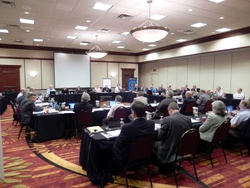 ARRL HF Band Plan
ARRL HF Band Plan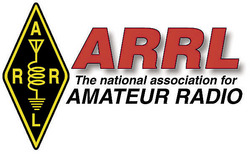 CEO Successor Search
CEO Successor Search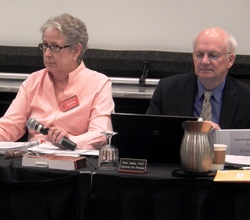
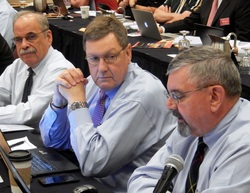
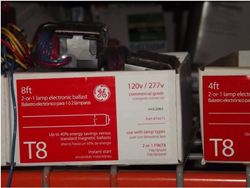
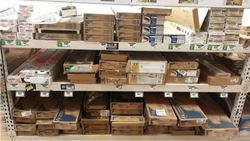
.jpg) ARRL CEO David Sumner, K1ZZ, addressed the topic of the FCC's planned field office closures in his "It Seems to Us" editorial in the August edition of QST. "The challenges the FCC faces in policing the radio spectrum are greater than ever and increasing every day," Sumner wrote. "Now is hardly the time to reduce its enforcement resources."
ARRL CEO David Sumner, K1ZZ, addressed the topic of the FCC's planned field office closures in his "It Seems to Us" editorial in the August edition of QST. "The challenges the FCC faces in policing the radio spectrum are greater than ever and increasing every day," Sumner wrote. "Now is hardly the time to reduce its enforcement resources." In addition to Seattle, the FCC is closing its field offices in or near Anchorage, Buffalo, Detroit, Houston, Kansas City, Norfolk, Philadelphia, San Diego, San Juan (Puerto Rico), and Tampa. Enforcement Bureau field offices in or near Atlanta, San Francisco, and Columbia (Maryland) will relocate to FCC-owned sites nearby or in the same metropolitan areas. Columbia is where the FCC's HF Direction Finding (HFDF) facility is located.
In addition to Seattle, the FCC is closing its field offices in or near Anchorage, Buffalo, Detroit, Houston, Kansas City, Norfolk, Philadelphia, San Diego, San Juan (Puerto Rico), and Tampa. Enforcement Bureau field offices in or near Atlanta, San Francisco, and Columbia (Maryland) will relocate to FCC-owned sites nearby or in the same metropolitan areas. Columbia is where the FCC's HF Direction Finding (HFDF) facility is located.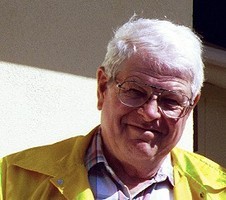
.jpg)
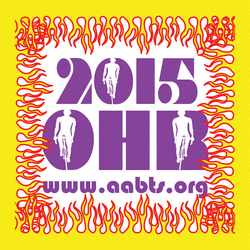 The ARROW group had support from the Chelsea Amateur Radio Club (
The ARROW group had support from the Chelsea Amateur Radio Club (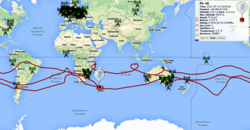
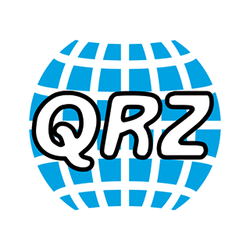 QRZ.com Major Website Upgrade Continues: The popular
QRZ.com Major Website Upgrade Continues: The popular  Radio Amateurs Join ISS Crew: Two radio amateurs were among the three new International Space Station (ISS) crew members, who arrived on station on July 23 (UTC). Kjell Lindgren, KO5MOS; Oleg Kononenko, RN3DX, and Kimiya Yui traveled into space aboard a Russian Soyuz spacecraft that has docked with the ISS. Expedition 44 Commander Gennady Padalka, RN3DT, and Flight Engineers Scott Kelly and Mikhail Kornienko, RN3BF, were on hand to greet the trio. Lindgren, Kononenko, and Yui will stay on the ISS until late December. Kelly and Kornienko are a few months into a 1-year mission that ends next March. Padalka, who also has been aboard since March, returns to Earth in September.
Radio Amateurs Join ISS Crew: Two radio amateurs were among the three new International Space Station (ISS) crew members, who arrived on station on July 23 (UTC). Kjell Lindgren, KO5MOS; Oleg Kononenko, RN3DX, and Kimiya Yui traveled into space aboard a Russian Soyuz spacecraft that has docked with the ISS. Expedition 44 Commander Gennady Padalka, RN3DT, and Flight Engineers Scott Kelly and Mikhail Kornienko, RN3BF, were on hand to greet the trio. Lindgren, Kononenko, and Yui will stay on the ISS until late December. Kelly and Kornienko are a few months into a 1-year mission that ends next March. Padalka, who also has been aboard since March, returns to Earth in September.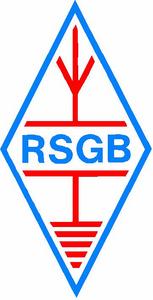 RSGB Youth Committee Operating MC0RYC DXpedition Activity in Wales: The Radio Society of Great Britain (RSGB) Youth Committee has mounted a DXpedition at the Brecon Beacons in Wales, July 23-30. The activity is sponsored by Kenwood. MC0RYC will be on all HF and VHF bands, including satellite. This is the first youth-oriented DXpedition the RSGB has organized. Activities will include operation from the mountain peaks Pen y Fan and Waun Fach. A goal is to train young operators to become "competent and confident radio amateurs." There will be direction finding, antenna building workshops, and operating practice. MC0RYC will be active in the IOTA Contest over the July 25-26 weekend.
RSGB Youth Committee Operating MC0RYC DXpedition Activity in Wales: The Radio Society of Great Britain (RSGB) Youth Committee has mounted a DXpedition at the Brecon Beacons in Wales, July 23-30. The activity is sponsored by Kenwood. MC0RYC will be on all HF and VHF bands, including satellite. This is the first youth-oriented DXpedition the RSGB has organized. Activities will include operation from the mountain peaks Pen y Fan and Waun Fach. A goal is to train young operators to become "competent and confident radio amateurs." There will be direction finding, antenna building workshops, and operating practice. MC0RYC will be active in the IOTA Contest over the July 25-26 weekend. 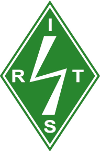 IRTS Offers New 70 MHz Band Awards: To celebrate the likely adoption of the band 69.9-70.5 MHz (4 meters) as a secondary Amateur Radio allocation in the European Common Allocation Frequency Table and Ireland's significant involvement in the process, the Irish Radio Transmitters Society (
IRTS Offers New 70 MHz Band Awards: To celebrate the likely adoption of the band 69.9-70.5 MHz (4 meters) as a secondary Amateur Radio allocation in the European Common Allocation Frequency Table and Ireland's significant involvement in the process, the Irish Radio Transmitters Society (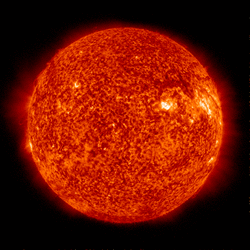 Geomagnetic indices were mostly quiet, with the average daily planetary A index going from 13.7 to 6.1, and the average mid-latitude A index declining from 12.3 to 8.1.
Geomagnetic indices were mostly quiet, with the average daily planetary A index going from 13.7 to 6.1, and the average mid-latitude A index declining from 12.3 to 8.1.







